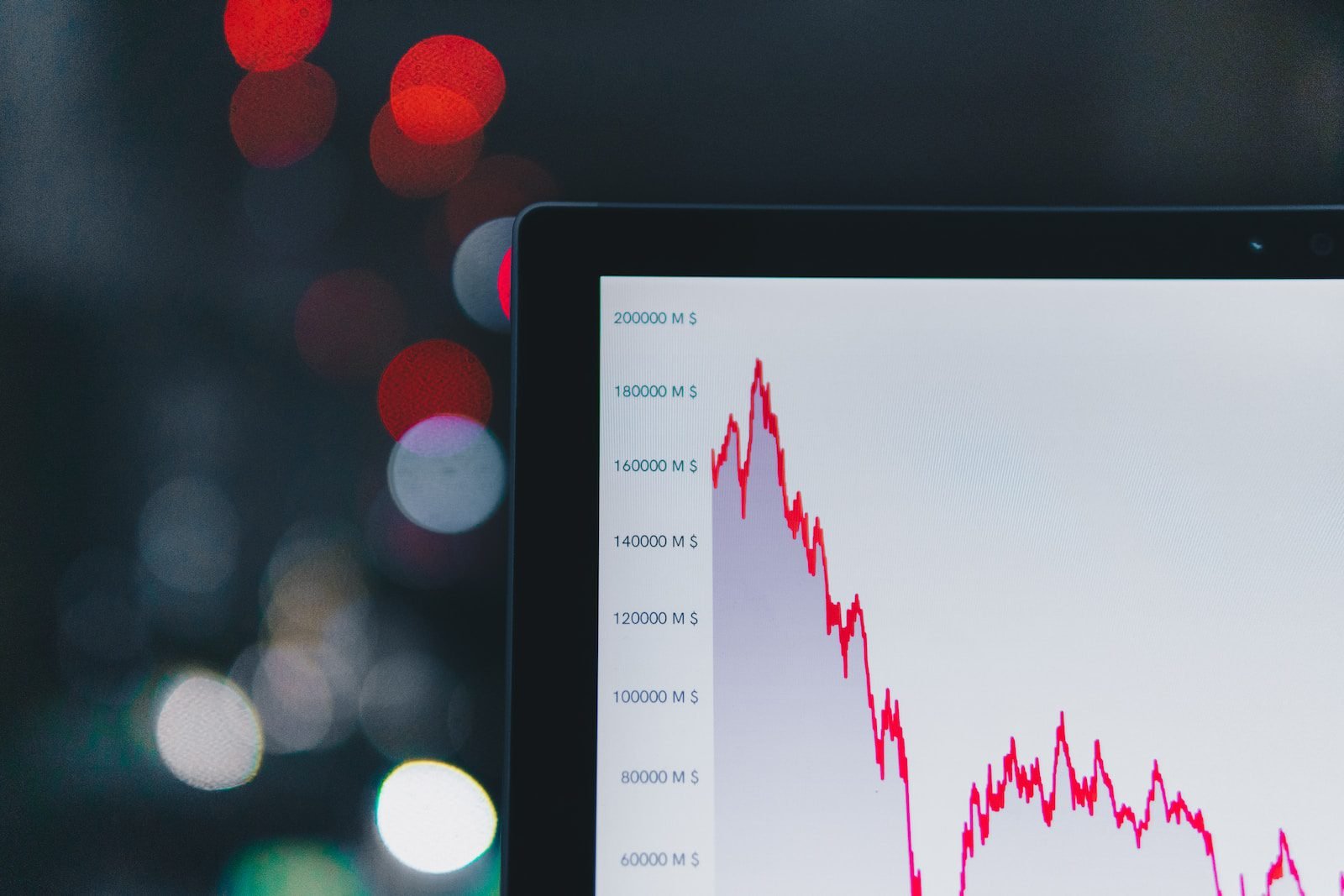March 2, 2023
New Delhi, India
Introduction to High-Frequency Trading (HFT)
High-Frequency Trading (HFT) is a fascinating and controversial topic in the world of finance. It’s an automated form of trading that involves using powerful computer algorithms to execute a large number of orders at lightning-fast speeds. Here are the key points:
- What Is HFT?
- HFT refers to the practice of rapidly buying and selling financial assets within extremely short timeframes—sometimes in milliseconds!
- It’s commonly employed by banks, financial institutions, and institutional investors.
- These entities use sophisticated algorithms to identify trading opportunities and execute large batches of trades swiftly.
The Origins of High-Frequency Trading
High-Frequency Trading (HFT) traces its roots back to the late 20th century when advancements in technology began to reshape the financial landscape. In the 1980s and 1990s, the proliferation of computers and the internet paved the way for electronic trading platforms, enabling faster and more efficient transactions. However, it wasn’t until the early 2000s that HFT as we know it today emerged. With the rise of powerful computers and high-speed internet connections, traders gained the ability to execute trades at speeds unimaginable just a decade earlier. The first HFT firms began to appear, employing algorithms to exploit minuscule price discrepancies across different markets. These pioneers laid the foundation for what would become a dominant force in global finance, revolutionizing the way securities are bought and sold. Today, High-Frequency Trading firms are ubiquitous, accounting for a significant portion of trading volume in major financial markets worldwide.
Mechanics of High-Frequency Trading Algorithms
High-Frequency Trading (HFT) relies on sophisticated algorithms to execute trades with lightning-fast speed and precision. These algorithms are meticulously designed to analyze vast amounts of market data in real-time, identifying fleeting opportunities for profit. At the core of HFT algorithms are mathematical models that incorporate factors such as price movements, volume patterns, order book dynamics, and market microstructure. By processing this data at incredible speeds, HFT algorithms can swiftly execute trades across multiple venues, taking advantage of small price discrepancies that may exist for only milliseconds. To achieve such rapid execution, HFT firms often employ colocation services, locating their servers in close proximity to exchange data centers to minimize latency. Additionally, HFT algorithms are constantly refined and optimized to adapt to changing market conditions and exploit new trading opportunities. This relentless pursuit of speed and efficiency is the hallmark of High-Frequency Trading, driving innovation and shaping the dynamics of modern financial markets.
Speed: The Key to High-Frequency Trading Success
Speed is undeniably the cornerstone of success in High-Frequency Trading (HFT), as even the slightest advantage in execution time can translate into significant profits. In the world of HFT, every microsecond counts, and firms invest heavily in cutting-edge technology to minimize latency and gain an edge over competitors. The quest for speed begins with the physical infrastructure, with HFT firms locating their servers in close proximity to exchange data centers to reduce network latency. Moreover, these firms utilize high-speed networks and specialized communication protocols to ensure rapid transmission of trading orders and market data. Additionally, HFT algorithms are meticulously optimized for speed, with developers employing techniques such as parallel processing and low-level programming languages to maximize efficiency. Beyond technology, HFT firms also compete fiercely for access to market data feeds and order execution mechanisms that offer the fastest response times. Ultimately, in the fast-paced world of High-Frequency Trading, speed is not just a competitive advantage – it’s the key to unlocking profitable opportunities in the blink of an eye.
Strategies Employed in High-Frequency Trading
High-Frequency Trading (HFT) encompasses a diverse range of strategies, each tailored to exploit specific market conditions and opportunities. One prevalent strategy is market making, where HFT firms continuously provide liquidity by simultaneously posting bid and ask quotes on multiple venues. By capturing the spread between buy and sell prices, market makers aim to profit from the flow of trades passing through their quotes. Another popular approach is statistical arbitrage, which involves identifying mispricings or inefficiencies in related assets and executing trades to capitalize on these discrepancies. HFT algorithms leverage statistical models and historical data to identify correlations and deviations between securities, enabling rapid-fire trading to capture fleeting profit opportunities. Additionally, some HFT strategies focus on exploiting short-term momentum or trend-following signals, seeking to profit from the rapid price movements that occur in response to news events or market sentiment shifts. Regardless of the specific strategy employed, High-Frequency Trading firms rely on speed, technology, and sophisticated algorithms to execute trades with precision and efficiency in today’s fast-paced financial markets.
Market Impact of High-Frequency Trading
The market impact of High-Frequency Trading (HFT) is profound and multifaceted, shaping the dynamics of modern financial markets in various ways. Here are some key aspects of HFT’s market impact:
- Liquidity Provision: HFT firms often act as liquidity providers, continuously posting bid and ask quotes on various trading venues. This enhances market liquidity by narrowing bid-ask spreads and ensuring that buyers and sellers can execute trades more efficiently. As a result, HFT contributes to smoother market functioning and improved price discovery.
- Reduced Transaction Costs: The presence of HFT can lead to lower transaction costs for investors, as tighter bid-ask spreads and increased liquidity translate into lower trading costs. This benefits both retail and institutional traders, allowing them to execute trades at more favorable prices.
- Increased Market Efficiency: HFT plays a role in enhancing market efficiency by quickly incorporating new information into asset prices. Through rapid analysis and execution, HFT algorithms help prices reflect relevant news and events in real-time, reducing the likelihood of mispricings and inefficiencies.
- Market Fragmentation: The rise of HFT has contributed to market fragmentation, with trading activity dispersed across multiple venues and trading platforms. While this fragmentation can increase competition and liquidity in the market, it also raises concerns about market transparency and regulatory oversight.
- Potential for Flash Crashes: Critics argue that HFT can exacerbate market volatility and increase the risk of flash crashes. The ultra-fast trading speeds and interconnected nature of HFT algorithms may amplify market movements, leading to sudden and severe price swings in certain situations.
- Regulatory Scrutiny: The growing prominence of HFT has prompted regulators to closely monitor its impact on financial markets. Regulatory measures such as circuit breakers, minimum resting times, and tick size restrictions have been implemented to mitigate potential risks associated with high-speed trading.
Overall, the market impact of High-Frequency Trading is complex and continues to be a subject of debate among market participants, regulators, and academics. While HFT contributes to liquidity provision, price efficiency, and reduced transaction costs, it also raises concerns about market stability, fairness, and transparency. As financial markets evolve, understanding and managing the impact of HFT remains a critical challenge for market participants and regulators alike.
Controversies Surrounding High-Frequency Trading
The rise of High-Frequency Trading (HFT) has sparked numerous controversies and debates within the financial industry. Here are some of the key controversies surrounding HFT:
- Unequal Access to Market Data and Infrastructure: Critics argue that HFT firms, with their substantial financial resources, often have privileged access to market data feeds and high-speed trading infrastructure. This unequal access can create an uneven playing field, disadvantaging retail investors and smaller institutional traders who may not have the same level of resources or access.
- Market Manipulation and Front-Running: There are concerns that some HFT strategies, particularly those involving latency arbitrage, may enable market manipulation and front-running of slower traders. HFT firms may exploit their speed advantage to detect and capitalize on large institutional orders before they are fully executed, potentially harming market integrity and investor confidence.
- Contribution to Market Volatility: Critics argue that the rapid-fire nature of HFT trading can exacerbate market volatility, leading to sudden and unpredictable price movements. In particular, HFT algorithms may amplify market swings during periods of heightened uncertainty or instability, potentially triggering flash crashes or other destabilizing events.
- Systemic Risks: The interconnectedness of HFT algorithms and the sheer volume of trades executed within milliseconds raise concerns about systemic risks to financial markets. A malfunction or error in one HFT system could cascade through the market, causing widespread disruption and amplifying market volatility.
- Regulatory Challenges: Regulating HFT presents significant challenges for policymakers and regulators, given the complexity and speed of HFT operations. Regulators must balance the need for market integrity and investor protection with the desire to promote innovation and liquidity provision. Developing effective regulatory frameworks to address the risks associated with HFT remains an ongoing challenge.
- Impact on Market Structure: The dominance of HFT in certain markets has raised questions about the overall structure and resilience of financial markets. Some argue that HFT’s emphasis on short-term profits and rapid turnover may undermine long-term investment and capital formation, potentially distorting market fundamentals and hindering price discovery.
These controversies highlight the multifaceted nature of HFT and the challenges it poses to market participants, regulators, and policymakers. While HFT has undoubtedly transformed financial markets, its impact and implications continue to be hotly debated within the industry and academia. Finding a balance between innovation, efficiency, and market stability remains a pressing challenge for stakeholders across the financial ecosystem.
Regulation and Oversight of High-Frequency Trading
Regulating and overseeing High-Frequency Trading (HFT) presents a significant challenge for policymakers and regulators due to the complexity and rapid pace of HFT operations. To address this challenge, regulators employ sophisticated surveillance systems to monitor HFT activity in real-time, detecting potentially manipulative or abusive practices. These surveillance systems analyze vast amounts of market data to identify irregularities and unusual trading patterns. Additionally, regulators impose controls and safeguards to ensure fair access to trading venues, such as minimum resting times and order-to-trade ratios, to prevent excessive order flow and market disruption. Enhanced transparency requirements may also be imposed on HFT firms to disclose information about their trading activities and strategies. Regulators implement circuit breakers and other market mechanisms to temporarily halt trading or limit price movements during periods of extreme volatility, aiming to prevent disorderly market conditions. Compliance with HFT regulations is enforced through inspections, audits, and enforcement actions, with penalties for non-compliance ranging from fines to trading restrictions. Furthermore, international coordination among regulators is crucial to harmonize regulatory standards and address cross-border challenges related to HFT. Despite these efforts, effectively regulating HFT remains an ongoing challenge, requiring continuous adaptation to technological advancements and evolving market dynamics to promote market integrity and investor confidence.
High-Frequency Trading and Market Volatility
High-Frequency Trading (HFT) has been a subject of scrutiny regarding its potential impact on market volatility. Here are some key considerations regarding the relationship between HFT and market volatility:
Amplification of Volatility: Critics argue that HFT can exacerbate market volatility due to its rapid-fire trading strategies and high trading volumes. HFT algorithms may react quickly to market events, amplifying price movements and contributing to short-term volatility spikes, especially during periods of heightened uncertainty or market stress.
Flash Crashes: The ultra-fast nature of HFT trading has raised concerns about the risk of flash crashes – sudden and severe price declines followed by rapid recoveries. HFT algorithms, with their ability to execute trades within microseconds, may inadvertently contribute to such events by exacerbating selling pressure or triggering cascading stop-loss orders.
Liquidity During Volatile Periods: Proponents of HFT argue that these firms provide valuable liquidity during periods of market volatility. By continuously quoting bid and ask prices and quickly adjusting their trading strategies, HFT firms may help stabilize prices and facilitate efficient price discovery, reducing the severity of market dislocations.
Impact on Investor Confidence: Persistent concerns about the role of HFT in market volatility could erode investor confidence in financial markets. Investors may become wary of participating in markets perceived to be overly influenced by rapid-fire trading algorithms, potentially leading to reduced trading activity and liquidity.
Regulatory Responses: Regulators have implemented measures to address concerns about HFT and market volatility. These measures include circuit breakers, which temporarily halt trading during extreme price movements, and market-wide stress tests to assess the resilience of financial markets to sudden shocks.
Overall, the relationship between High-Frequency Trading and market volatility is complex and multifaceted. While HFT may contribute to short-term volatility spikes, it also plays a role in providing liquidity and enhancing market efficiency. Regulators continue to monitor HFT activity closely and implement measures to mitigate potential risks associated with high-speed trading, aiming to strike a balance between market stability and innovation in financial markets.
The Future of High-Frequency Trading
Looking ahead, the future of High-Frequency Trading (HFT) is both promising and uncertain. As technology continues to advance and markets evolve, HFT firms are likely to adapt and innovate, developing more sophisticated algorithms and trading strategies. The pursuit of speed and efficiency will remain paramount, with firms investing in cutting-edge technology and infrastructure to maintain their competitive edge. However, the regulatory landscape surrounding HFT is expected to evolve as well, with policymakers seeking to address concerns about market stability, fairness, and transparency. International coordination among regulators will become increasingly important as HFT activity spans across global markets. Moreover, the rise of alternative trading venues and new asset classes may present both opportunities and challenges for HFT firms, requiring them to navigate changing market dynamics and regulatory environments. Ultimately, the future of HFT will be shaped by a delicate balance between innovation, regulation, and market demand.
Bottom Line
In conclusion, High-Frequency Trading (HFT) has transformed the landscape of financial markets, revolutionizing the way assets are bought and sold. From its origins in the early 2000s to its current prominence in global finance, HFT has reshaped market microstructure and trading dynamics, introducing new opportunities and challenges for market participants. While HFT has contributed to enhanced liquidity, price efficiency, and reduced transaction costs, it has also raised concerns about market stability, fairness, and regulatory oversight. Navigating the complexities of HFT requires a nuanced understanding of its mechanics, strategies, and market impact, along with proactive regulation and risk management measures. As financial markets continue to evolve, stakeholders must remain vigilant and adaptive, striving to strike a balance between innovation, integrity, and stability in the fast-paced world of High-Frequency Trading.
Also Read Our Latest Blog: 5 Essential Financial Ratios Every Indian Stock Investor Should Understand
Disclaimer:
CurrencyVeda provides this news article for informational purposes only. We do not offer investment advice or recommendations. Before making any investment decisions, please conduct thorough research, consult with financial experts, and carefully consider your financial situation, risk tolerance, and investment goals. Investing in the stock market carries risks, and it’s essential to make informed choices based on your individual circumstances. CurrencyVeda is not liable for any actions taken based on the information provided in this article.




